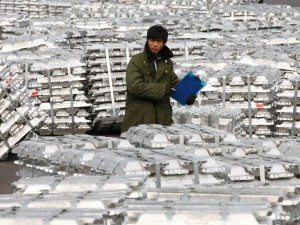
[miningmx.com] – THE losses Eskom expected because of the way its aluminium contracts with BHP Billiton were drafted was the main reason it requested tariff increases of 53% and 43% from the National Energy Regulator of South Africa (Nersa) in 2008.
“The real reason was not the increase in the prices of primary energy (coal), as Eskom said at the time – that was simply used in order to hide the real reasons for the increases,’ says Johan Anderssen, a consultant who has been following and analysing the effect of the contracts for many years.
Nersa eventually granted Eskom increases of “only’ 28% and 37% for 2009 and 2010 to avert the looming crisis caused by the enormous losses on the aluminium contracts.
Access to the contracts, which were made public for the first time last week more than 20 years after they were signed, showed what had long been suspected – that the excessively low electricity prices paid by Billiton to Eskom to keep these two smelters going amounted in recent years to a huge subsidy for the smelters, Hillside in Richards Bay and Mozal in Maputo.
But the indirect effect of the contracts on Eskom’s financial position, and hence on every electricity consumer, was much worse: it destabilised Eskom’s finances so badly that the electricity supplier could not get any finances for its three large building projects.
The contracts rest entirely on the aluminium price to determine the rate at which Eskom provides electricity for the two smelters. This means that Eskom bears the full risk for the two plants.
However the aluminium price became so erratic after 2006 that Eskom could no longer rely on this as a future source of income. The contracts contribute 2% of Eskom’s revenue, but draw 9% of the electricity it sells.
Anderssen’s analysis of Eskom’s annual reports since 2001 shows that until 2006 Eskom was quite happy about its exposure to the aluminium contracts, but in 2007 and 2008 a bomb exploded for Eskom’s board when it became clear that the contracts would result in it suffering enormous losses – and this especially at a time when it had to build new power stations.
The aluminium contracts are also behind the tariff increases of 18.7% that Eskom requested from Nersa in 2007 for 2008. In the end, a 14.2% increase was approved.
“In 2007, Eskom’s auditors even helped to amend an estimated price curve, which a company is required to use for the future valuation of its income. The original price curve would have resulted in a loss of R6.873bn for the derivative instruments, and a net loss of R820m,’ Anderssen said.
However, this would have been unacceptable because healthy credit ratings were desperately required. After all, Eskom still had to obtain much of the financing for Medupi.
To salvage the situation, the auditors agreed to amend the forward price curve. This made a difference of R10.9bn to Eskom’s revenue.










